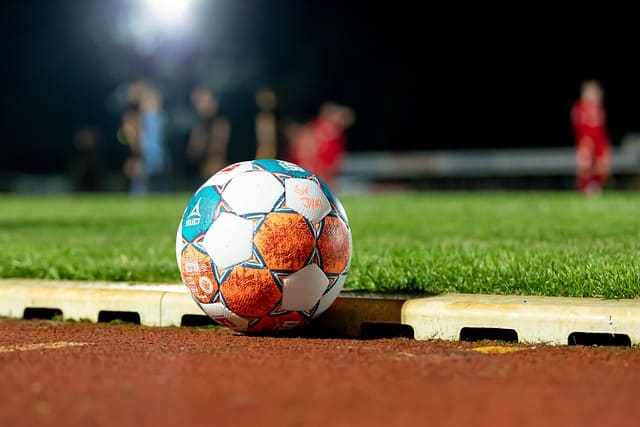Youth football training is more than just kicking a ball around or playing a match. It’s about laying the foundation for the next generation of football stars. If you’ve ever seen a young player dribble with precision or score a spectacular goal, it’s easy to think their talent is just a natural gift. But in reality, effective youth football training is the key that unlocks that potential.
If you’re involved in coaching or supporting young athletes, you’re probably aware that the right training methods can make all the difference in their development. The goal is simple: help young players build essential skills, boost their fitness, and foster a love for the game. The best coaches don’t just teach the game—they inspire, motivate, and shape the future of the sport.
In this article, we’ll explore some of the most effective training methods for youth football players. From skill-building exercises to fitness for young players, we’ll cover all the bases to ensure your future stars have the tools they need to thrive.
1. The Importance of Age-Appropriate Training
One of the biggest mistakes many youth coaches make is trying to push young players too hard, too soon. It’s easy to get caught up in wanting to create a future star, but age-appropriate training is vital for long-term success. Kids grow and develop at different rates, and forcing them into drills or training methods designed for older players can be counterproductive.
For example, younger players (under 12) should focus more on basic skills like ball control, passing, and dribbling. These foundational techniques are the backbone of good football, and it’s essential that players develop these before moving on to more advanced strategies.
Personal Story:
I remember when I first started coaching a U10 team. The players were eager, but many of them struggled with simple passing drills. Rather than rushing through advanced tactics, I slowed things down and focused on the fundamentals. Over time, they became more confident with their passing, and by the end of the season, they were playing like a well-oiled machine. Patience and simplicity are key at this stage.

2. Youth Soccer Drills to Boost Skill Development
The backbone of any successful youth football training session is the youth soccer drills you use. The right drills will help players improve their skills while keeping the session fun and engaging.
Drill 1: Passing and Moving
- Setup: Set up two lines of players facing each other.
- Action: Players pass the ball to the person opposite them, then immediately move to the end of the line.
- Goal: Focus on accuracy and timing, ensuring players pass and move quickly.
This drill helps players develop a quick touch and movement off the ball, which are crucial in football. The ability to pass quickly and make runs is an essential part of the game, especially as players get older.
Drill 2: Dribbling Through Cones
- Setup: Set up a series of cones in a straight line.
- Action: Players dribble the ball through the cones, focusing on keeping the ball close to their feet.
- Goal: Improve ball control and agility.
Dribbling is at the core of every player’s ability to beat opponents. By mastering dribbling basics, young players will gain confidence in one-on-one situations and learn how to maintain control even under pressure.
3. Skill-Building Exercises: Moving Beyond the Basics
While mastering the basics is essential, it’s important for youth players to start challenging themselves with more advanced skill-building exercises as they grow. These exercises should not only improve individual skills but also push players to think strategically about the game.
Exercise 1: Juggling for Balance and Touch
- Setup: Players start by juggling the ball with their feet, trying to keep it off the ground.
- Action: Begin with simple touches and gradually work up to controlling the ball with alternating feet.
- Goal: Improve touch and balance. The more you can juggle, the more comfortable you become with the ball.
Juggling is a fantastic exercise for developing technical skills like ball control, but it also fosters mental focus. The more time young players spend juggling, the better they will become at receiving and passing the ball in matches.
Exercise 2: Passing Under Pressure
- Setup: Create a small area where players pass to each other, with a defender in the middle trying to intercept.
- Action: Players must pass and move quickly to avoid the defender, encouraging quick decision-making under pressure.
- Goal: Improve passing accuracy and the ability to think on the spot.
This exercise simulates match situations where players need to pass quickly and accurately while under pressure. It teaches them the value of quick thinking and positioning, two critical elements in the game.
4. Fitness for Young Players: Keeping Them at Peak Performance
Football is a physically demanding sport, and even young players need to develop a good level of fitness. While fitness for young players doesn’t mean punishing sprints or weightlifting, it does involve activities that improve endurance, agility, and strength.
Exercise 1: Agility Drills
- Setup: Create a series of cones or markers arranged in a zigzag pattern.
- Action: Players sprint through the cones, changing direction as quickly as possible.
- Goal: Improve footwork and agility, essential for evading defenders and making quick turns.
Agility is vital in football because players constantly change direction, whether they’re attacking or defending. These drills are fun and keep the kids moving while improving their ability to react quickly and maintain balance.
Exercise 2: Interval Running
- Setup: Mark out a short distance (20-30 meters) for players to run.
- Action: Have players sprint for 10 seconds, then jog for 20 seconds. Repeat this for 5-10 rounds.
- Goal: Improve cardiovascular endurance, which is necessary for maintaining performance throughout the game.
Building endurance at a young age helps players maintain energy and focus during the latter stages of matches. This exercise teaches players how to manage their energy, which can be the difference between winning and losing in the final minutes of a match.
5. Motivation and Teamwork Development
Football is a team sport, and as much as individual skills matter, teamwork is what really takes the game to the next level. Helping young players understand the importance of teamwork and communication on the field is just as important as teaching them how to kick a ball.
Drill: Small-Sided Games
- Setup: Divide players into small teams (e.g., 3v3 or 5v5) and set up a small field.
- Action: Play a game where players must focus on passing, supporting each other, and working as a team.
- Goal: Encourage communication and collaboration.
These games are essential for developing teamwork and game awareness. Players learn to support one another, anticipate passes, and make decisions that benefit the team. Plus, it’s a great way to keep the energy up and ensure that the kids are having fun.
Motivation Tip: Positive reinforcement is crucial when coaching youth players. Celebrate their achievements, no matter how small, and encourage them to challenge themselves. This keeps their motivation high and boosts their confidence on and off the field.
6. The Role of Youth Football Camps
While regular practice is key, youth football camps provide a concentrated experience that allows young players to develop their skills in an immersive, high-energy environment. These camps offer the chance to work with experienced coaches, compete against other talented players, and focus on specific areas of their game.
At these camps, players can hone their fitness and work on positioning or tactical awareness—all while gaining valuable exposure to different coaching styles. It’s also a great way to foster a sense of camaraderie among players, helping them make new friends while improving their skills.
Conclusion: Developing the Next Generation of Stars
Effective youth football training is about more than just drills—it’s about fostering a love for the game and building a strong foundation for future success. By focusing on age-appropriate training, skill-building exercises, fitness, and teamwork development, you’ll be setting young players up for a bright future in football.
Remember, the road to becoming a football star isn’t a sprint; it’s a marathon. So, keep it fun, keep it challenging, and above all, keep it positive. With the right training, any young player can develop into a future football star.



